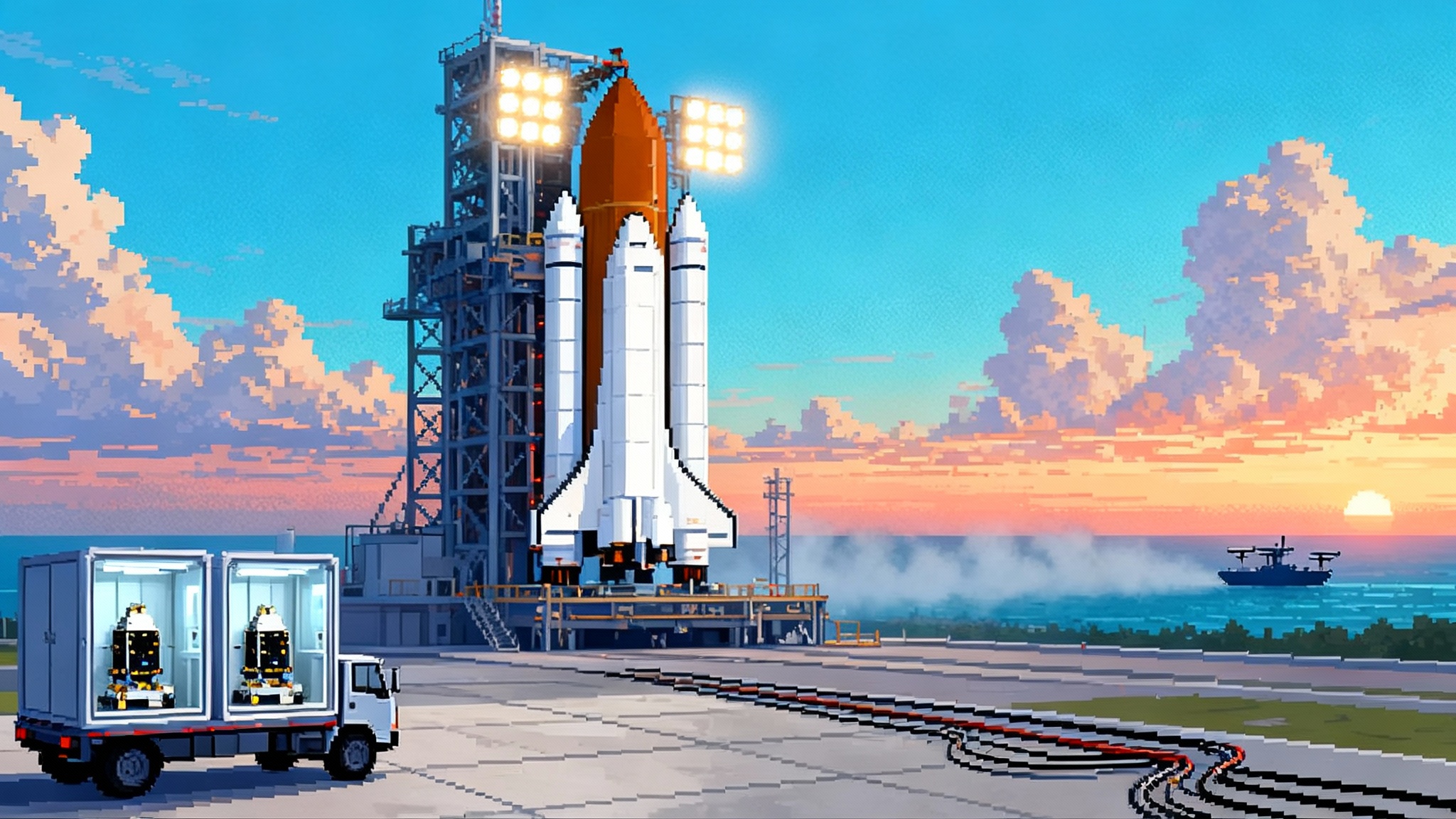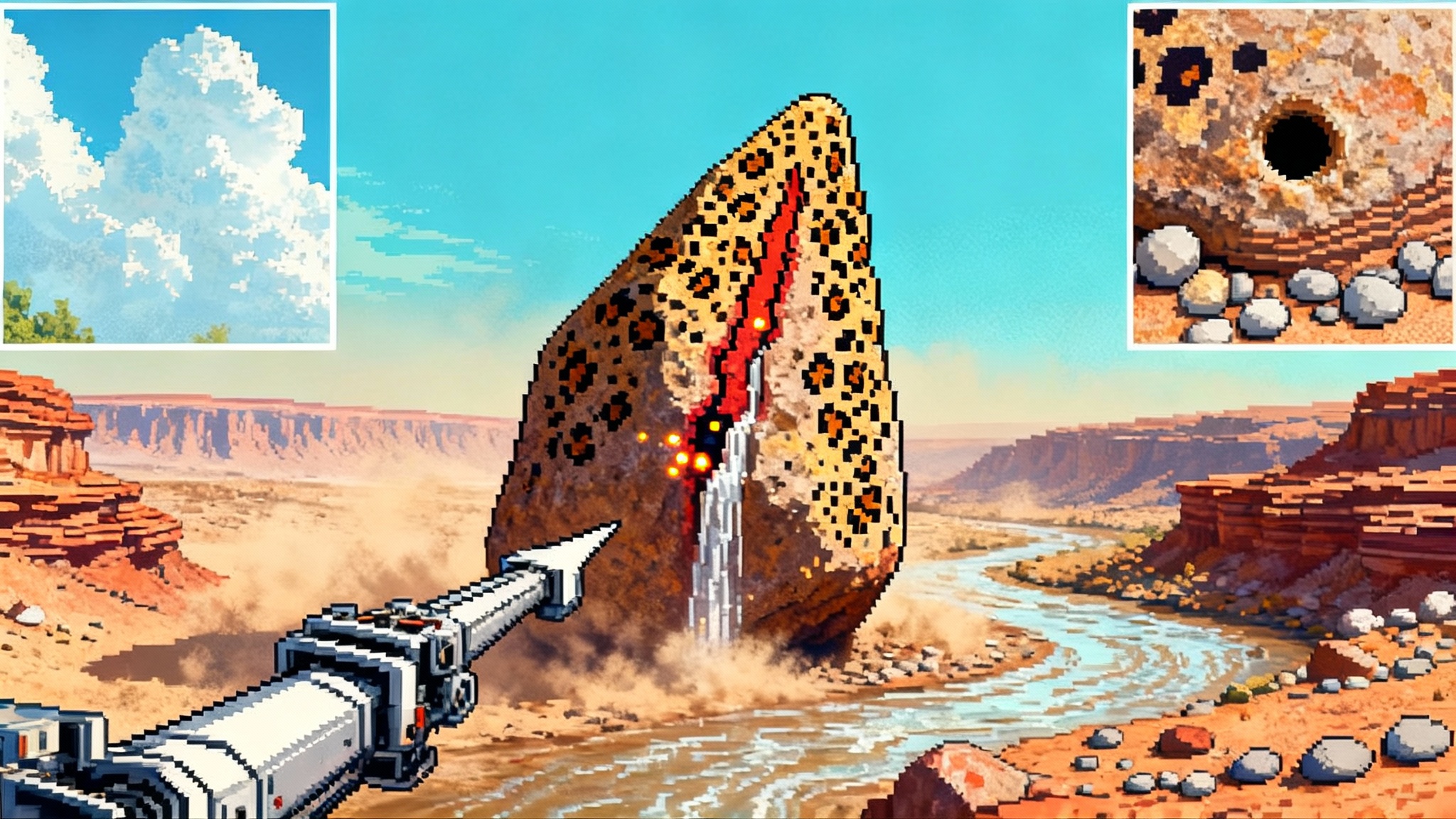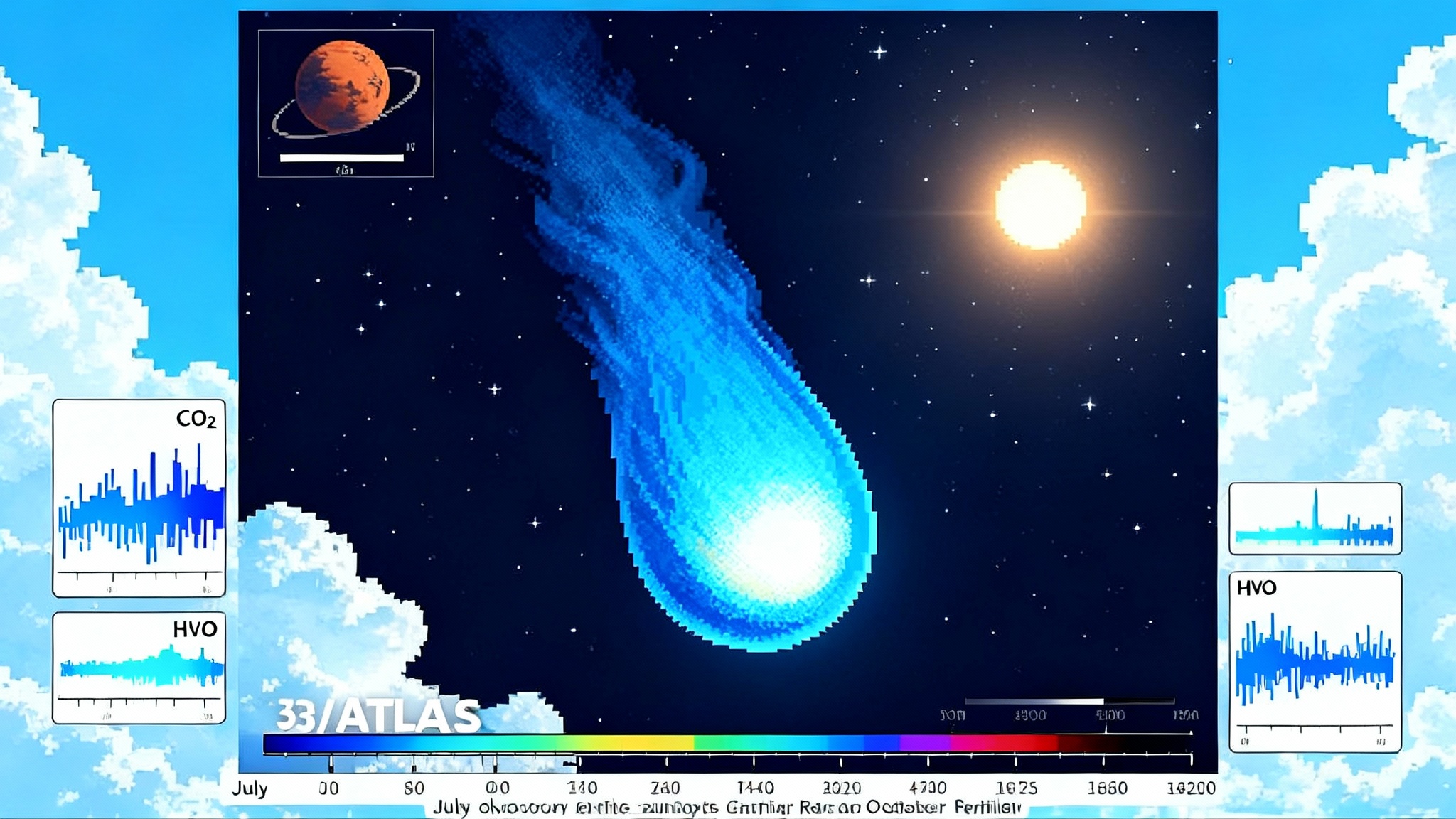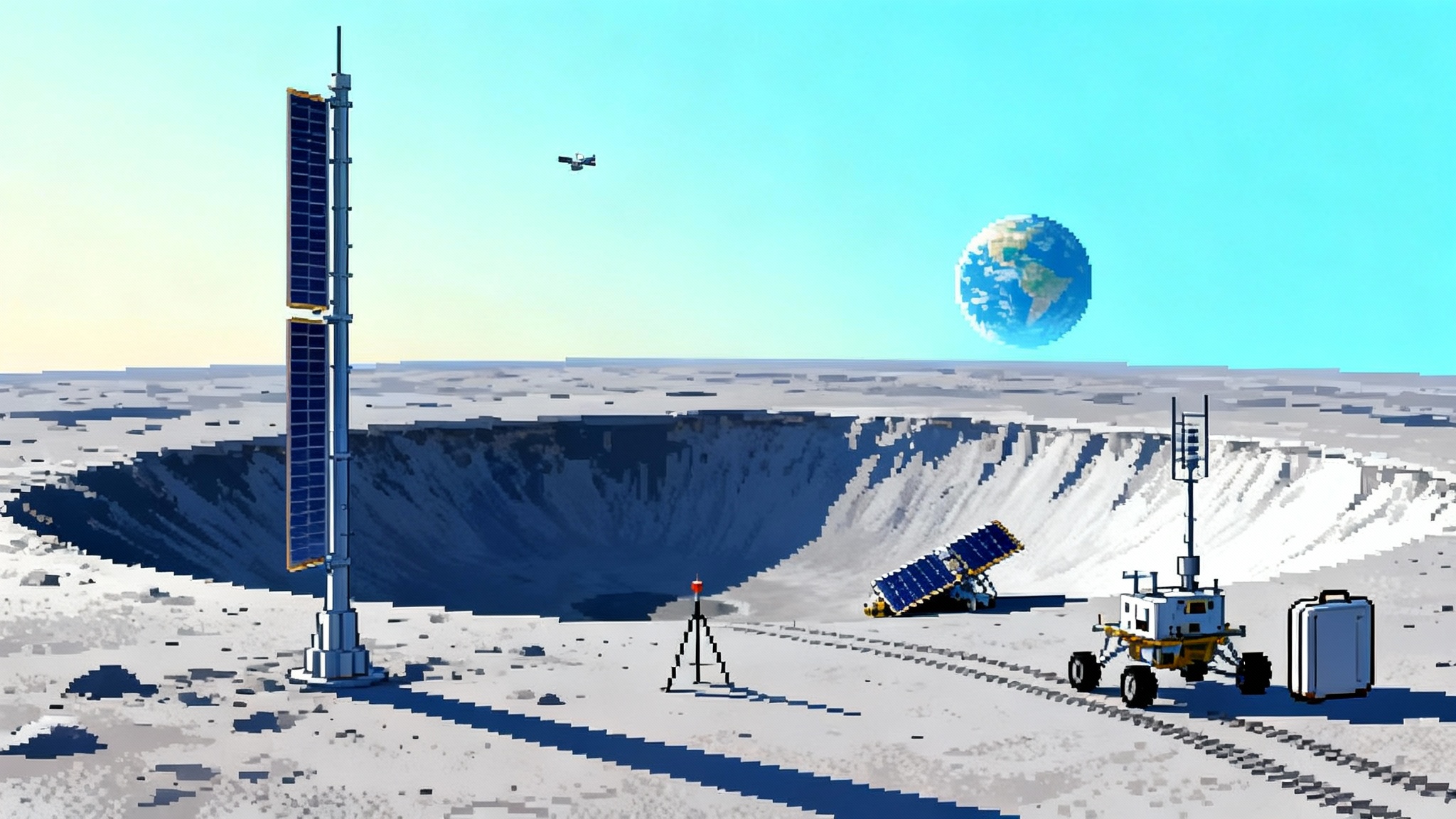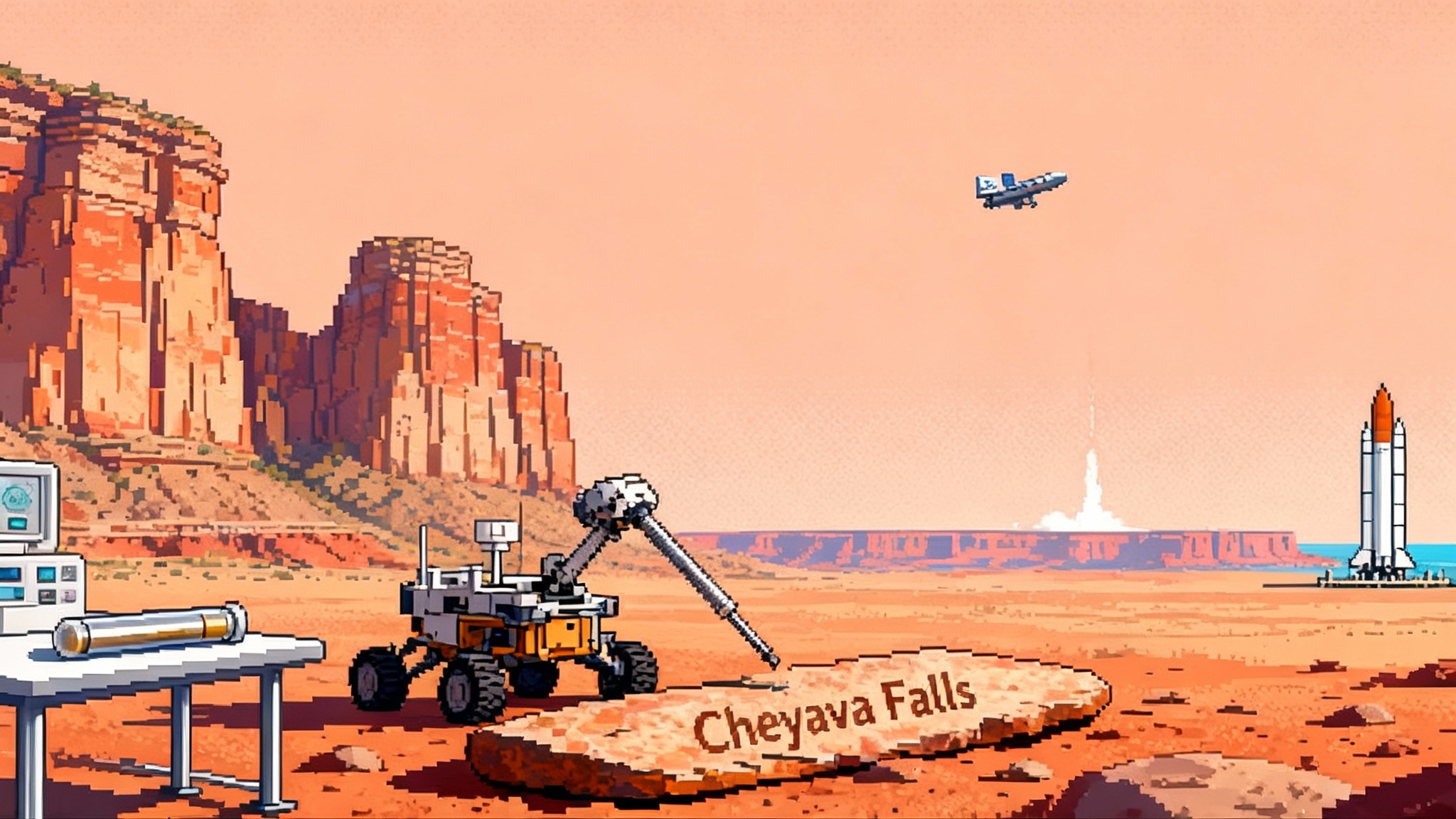Chang’e‑6 Far‑Side Samples Are Rewriting Lunar History
Peer reviewed results from Chang’e‑6 are changing the Moon’s origin and evolution story. The first analyses point to a global magma ocean, a markedly drier far-side mantle, and a magnetic field that flickered, not faded. Here is what that means for missions.
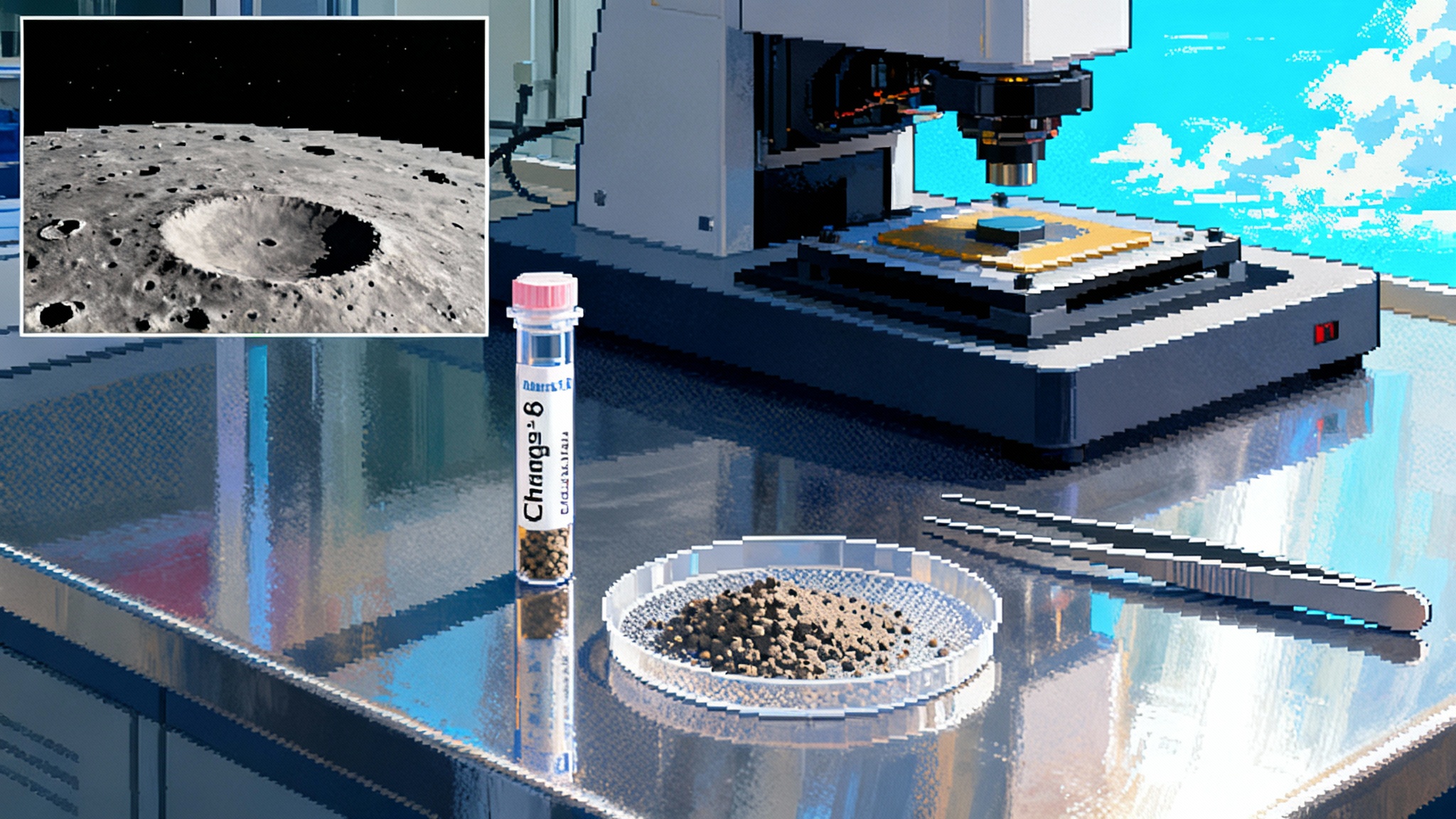
The far side finally speaks
Until last year, every lunar rock ever studied in a lab came from the Moon’s near side. Chang’e‑6 changed that. The mission landed inside the South Pole–Aitken basin on the far side, scooped and drilled, then dropped 1.9 kilograms of soil and rock into a return capsule. In 2025 the first peer reviewed papers from these samples started landing, and they are already reshaping the timeline that scientists and mission planners have used for decades.
One result stands out because it is simple to say and hard to ignore. The mantle beneath the far side looks much drier than the mantle tapped by near side lavas. In a Nature paper, the team reports water in the far-side mantle source at roughly 1 to 1.5 micrograms per gram, the lowest mantle value yet measured from any lunar sample. That number is not a rounding error. It is an order of magnitude shift in what many assumed about the Moon’s interior, and it immediately forces a rethink of how the Moon formed and cooled. See the first study on this in Nature, which details the measurements and their implications, including the hydrogen isotopes and melt inclusions that underpin the estimate: water abundance in the lunar farside mantle.
A global magma ocean goes from theory to map
The global magma ocean has long been the leading model for the newborn Moon. The idea is that the Moon formed hot and mostly molten, crystallized from the outside in, and separated into distinct layers. Chang’e‑6 gives that picture sharper edges. Two lines of evidence push in the same direction.
- The water result points to far-side mantle cumulates that are more depleted in incompatible elements, including water, than the near side’s Procellarum KREEP Terrane. Incompatible elements concentrate in melt. If the far side mantle source is extremely depleted, it means the late residual melts of the global magma ocean did not enrich that hemisphere the same way they did the near side.
- Independent geochemistry from the returned clasts indicates “ultra-depleted” sources for some far-side basalts, again consistent with early crystallization of the magma ocean and later melt segregation that favored the near side. That asymmetric enrichment would have boosted radiogenic heat on the near side and left the far side colder, thicker, and poorer in heat producers.
Put together, the first Chang’e‑6 papers let scientists draw a bolder map of the Moon’s interior. The magma ocean likely crystallized globally, but the tail end of that process pooled heat-making elements unevenly. The far side inherited a mantle with less water and fewer heat producers, which helps explain why it has fewer, thinner maria and why many of its volcanic rocks carry the signature of deep, chemically depleted sources.
The far side’s clock: older, younger, and longer
The same sample suite also tightens the Moon’s chronology. Basalt fragments from Chang’e‑6 span at least two very different ages. Most are about 2.83 billion years old, while a rare high aluminum basalt clocks in near 4.2 billion years. Those numbers lengthen the known span of far-side volcanism to at least 1.4 billion years and tie activity to changing mantle conditions through time. Independent work using impact melt clasts assigns the South Pole–Aitken basin’s formation to around 4.25 billion years ago, which matters because that monster impact may have helped redistribute incompatible elements and water in the mantle. The ages and petrology now line up with an early hot Moon that cooled unevenly, with the far side on the colder track.
For mission designers, the practical meaning is clear. The South Pole–Aitken basin is not just another sampling ground. It is a time capsule that holds the oldest known impact melt and a record of mantle sources that near side missions did not capture.
The Moon’s magnetic field did not just fade
A second headline from Chang’e‑6 is magnetic. Paleomagnetic measurements from far-side basalt clasts show field strengths of roughly 5 to 21 microteslas at about 2.8 billion years ago. That is a surprise. Previous compilations suggested the lunar dynamo fell off a cliff near 3.1 billion years ago and limped along before dying. The new data point to a rebound in strength around 2.8 billion years ago on the far side. The authors argue that the dynamo likely fluctuated, with power sources that waxed and waned. Leading candidates include a basal magma ocean that persisted at the core–mantle boundary, mechanical stirring from precession, and later core crystallization. You can read the paleomagnetic study in Nature: a reinforced lunar dynamo recorded by Chang’e‑6 basalt.
That finding does more than tidy up a graph. A fluctuating dynamo changes how we think about interior heat flow and the timing of volcanic episodes. It also reframes surface space weathering and volatile retention. A stronger field at 2.8 billion years would have modulated the solar wind flux reaching the surface, which in turn affects how easily surface OH and ice could form or survive in cold traps.
What this means for the south pole
No one is canceling south polar missions. Polar exploration has a different target than interior water. Permanently shadowed craters are cold enough to trap water ice delivered by comets and implanted by the solar wind. Chang’e‑6 tells us the far-side mantle is drier, but it does not erase the case for ice in cold traps.
It does reshape assumptions that creep into planning. If the far-side mantle is drier, then endogenous outgassing that might resupply polar volatiles is less likely there. That pushes resource models toward exogenous delivery and migration. Practically, that means:
- Prospecting strategies should treat ice distributions as patchy and delivery dominated. Invest in instruments that can resolve thin, mixed ice within regolith rather than counting on thick, pure slabs everywhere.
- Expect steeper gradients in ice content between shadowed and sunlit terrain. Design traverses that cross those boundaries to test migration hypotheses.
- Plan for redundancy in volatiles. Oxygen from ilmenite and anorthosite reduction, and hydrogen recovered from regolith-bound OH, will be steady contributors even if local ice is scarce.
Artemis vs. ILRS: who should change what
Both the United States and China plan to work the south polar highlands. The new Chang’e‑6 results should push each program to tune site selection and payloads, but not to abandon the south pole. Here is how the findings cut in.
-
Site selection
- Favor interfaces. Ridges and crater rims that overlook permanently shadowed regions but sit on anorthositic highlands will let missions sample both volatile traps and the far-side style crust that records magma ocean crystallization.
- SPA-adjacent is a feature, not a bug. Sites near the rim of South Pole–Aitken, for example around the Schrödinger basin and Amundsen region, offer access to impact melts and deep-seated materials that test the ultra-depleted mantle picture.
-
Payload architecture
- Include a magnetometer boom on every lander and rover. The fluctuating dynamo result makes in situ field mapping valuable along traverses that cross different units and ages.
- Fly a heat flow package and shallow seismic nodes. If a basal magma ocean persisted, even as a partially molten layer, modern heat flow and small seismic arrays can constrain where and how that layer survived.
- Add microdrills and core tubes designed for paleomagnetism. The carriers that hold ancient field signals are easily disturbed. Intact cores preserve them.
- Use neutron and infrared spectrometers tuned for thin films. If ice is often a veneer mixed with grains, the instruments need sensitivity to centimeters and millimeters, not just meters.
-
Operations and cadence
- Build traverses that cross lithologic boundaries. For Artemis, that means rim to floor and back, with waypoints on fresh crater ejecta and massifs. For China’s ILRS concept, it means pairing a lander with a hopper or small rover dedicated to an SPA melt exposure.
- Cache and return. Far-side dynamo and mantle questions will not be fully answered in situ. Prioritize caches for the most pristine, fine grained, and glassy materials that are best at recording fields and volatile histories.
Resource prospecting assumptions that should change
- Do not count on mantle outgassing to top up polar volatiles on the far side. The dry mantle signal says that faucet is mostly closed.
- Reweight the near side pyroclastic story. Near side pyroclastic glasses have proven to store measurable water that cycles with day and night. The far side likely offers fewer such reservoirs, so propellant and life support planning should lean more on oxygen extraction from oxides and on imported hydrogen or recycled hydrogen.
- Treat thorium and potassium as proxies for where not to aim ISRU water hunts. The Procellarum KREEP Terrane is rich in heat producers and has higher mantle water estimates. That is a geological clue, not a guarantee of accessible ice. At the poles, shadow and temperature still win.
Priorities for the next far-side landings
If Chang’e‑6 was the first taste, what should the second plate serve? Three priorities rise to the top.
-
Sample the South Pole–Aitken melt sheet directly
- Seek fresh exposures on peak rings and floor fractures that are likely to have excavated and transported melt. Those clasts can lock in the age of SPA and test how that impact reshaped the distribution of incompatible elements and water in the mantle.
- Return oriented cores through regolith to capture vertical variations in glass, agglutinates, and magnetic carriers.
-
Anchor the dynamo timeline on the far side
- Target basalts and impact melts that span 3.3 to 2.5 billion years. The 2.8 billion year point now looks like a rebound in field strength. Bracketing it with older and younger materials will tell us if that rebound was a blip or a phase.
- Fly a gradiometer or dual magnetometers separated by a fixed baseline to reduce ambiguity from local anomalies.
-
Build an interior-structure kit
- Deploy a small network of autonomous seismometers and heat flow probes. The goal is to constrain any residual partially molten layers at depth and to check whether basal melt could have powered the dynamo intermittently.
- Pair geophysics with ground truth: sample density and porosity in trenches to improve interpretations of neutron and radar data.
How planners should adjust schedules and roles
- Artemis can keep its focus on the south pole, but should add far-side science hooks to early missions. A sample cache from a south polar anorthosite ridge that captures fine magnetic carriers would be low mass and high value. Artemis payload calls should explicitly request paleomagnetic sampling capability and compact heat flow packages.
- China’s ILRS roadmap, which already leans into SPA geography, is well placed to capitalize on the dry mantle and ultra-depleted source story. The next farside robot should be aimed at a clean exposure of SPA melt or a young basalt flow that can be age dated and tested for remanent magnetization.
- Both programs should coordinate relay assets and spectrum for simultaneous geophysics. A short lived far-side seismic node and a near side heat flow measurement taken during the same lunar night can anchor models of hemispheric asymmetry.
The story that emerges
The first peer reviewed Chang’e‑6 results draw a Moon that was molten, then unevenly enriched as the magma ocean froze. The far side’s mantle is markedly drier and more depleted, which tracks with a colder, thicker crust and fewer seas of lava. The South Pole–Aitken impact at about 4.25 billion years helped lock that asymmetry in place. Volcanism on the far side did not quit early. It flared at 4.2 billion years, then again at 2.8 billion years, likely aided by thin crust and local mantle conditions. During that mid era the Moon’s magnetic field did not just dwindle. It flickered back to microtesla strengths, a clue that heat and motion deep inside were still in play.
None of this tells explorers to turn around. It tells them where to look and what to carry. Aim for boundaries. Bring magnetometers, heat probes, and microdrills. Expect ice to be a local phenomenon, not a planetary subsidy. If Artemis and ILRS both adjust in that direction, the next decade will not only plant flags near the south pole. It will pin down how a small rocky world built itself, lost its water to one hemisphere, and kept a heartbeat in its core long after the surface went quiet.
